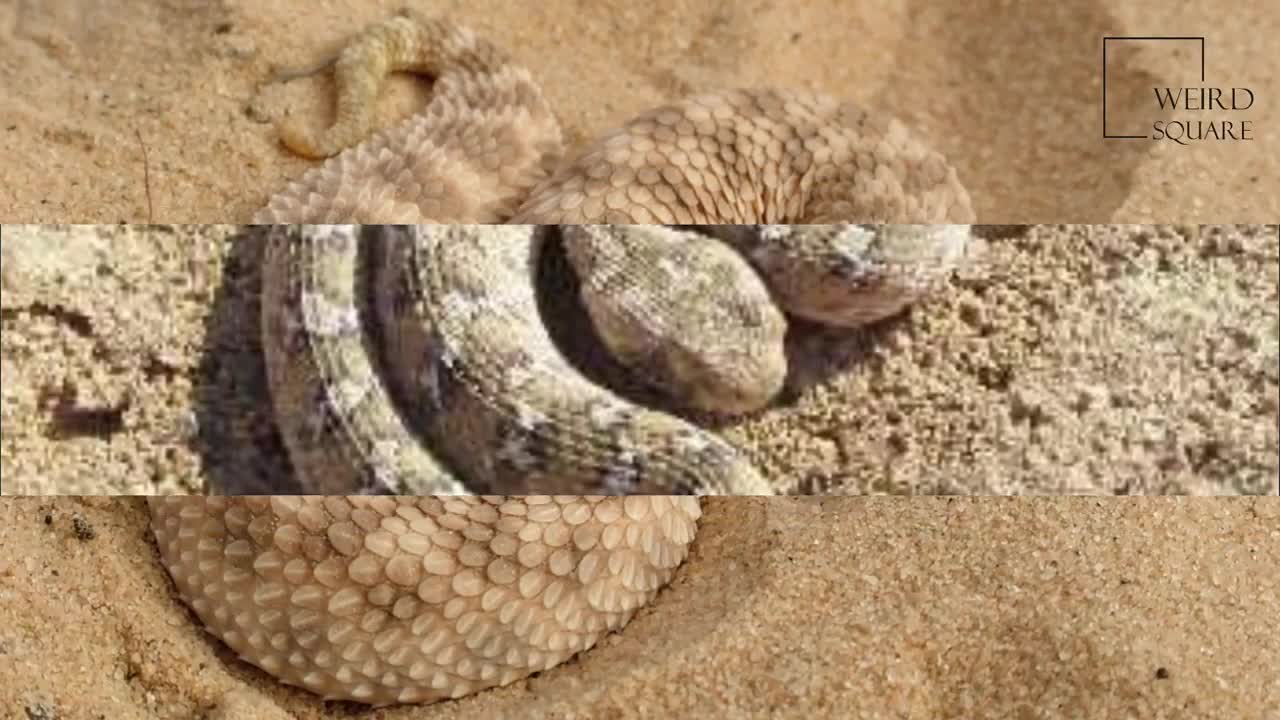Premium Only Content

Interesting facts about Egyptian viper by weird sqaure
The most, new, latest, shocking, weird, scary, funny, fascinating, interesting and amazing things | facts in the world.
Cerastes cerastes (common names: Saharan horned viper horned desert viper,more) is a venomous viper species native to the deserts of Northern Africa and parts of the Middle East. It often is easily recognised by the presence of a pair of supraocular "horns", although hornless individuals do occur.No subspecies are currently recognised.
These snakes favor dry, sandy areas with sparse rock outcroppings, and tend not to prefer coarse sand. Occasionally, they are found around oases, and up to an altitude of 1,500 metres (4,900 ft). Cooler temperatures, with annual averages of 20 °C or less, are preferred.
They typically move about by sidewinding, during which they press their weight into the sand or soil, leaving whole-body impressions. Often, it is even possible to use these impressions to make ventral scale counts. They have a reasonably placid temperament, but if threatened, they may assume a C-shaped posture and rapidly rub their coils together. Because they have strongly keeled scales, this rubbing produces a rasping noise, similar to the sound produced by snakes of the genus Echis. In the wild they are typically ambush predators, lying submerged in sand adjacent to rocks or under vegetation. When approached, they strike very rapidly, holding on to the captured prey (small birds and rodents) until the venom takes effect.
In captivity, mating was observed in April and always occurred while the animals were buried in the sand. This species is oviparous, laying 8–23 eggs that hatch after 50 to 80 days of incubation. The eggs are laid under rocks and in abandoned rodent burrows. The hatchlings measure 12–15 cm (about 5-6 inches) in total length. Animal planet | Discovery | Netflix | Documentary | Animal World
| BBC Earth | NatGeoWild | Brave wilderness | The Dodo| Animal Aid Unlimited | Animal Planet | Real Wild | iPanda | Hope for Paws | Kruger Sightings | Discovery
-
 1:15
1:15
factsunique
3 years ago7 INTERESTING FACTS ABOUT KANGAROOS
241 -
 0:47
0:47
Whattheheck2
4 years agoInteresting facts about Hummingbirds 8
38 -
 0:47
0:47
Whattheheck2
4 years ago $0.01 earnedInteresting facts about Hummingbirds 5
56 -
 4:39:16
4:39:16
Meisters of Madness
5 hours agoMadness in a Pod
6891 -
 1:25:44
1:25:44
HELMETFIRE
2 hours ago🟢GAMING WITH FIRE EP9🟢
587 -
 1:24:08
1:24:08
Jean-Claude@BeyondMystic
13 hours ago🌀 THE WACKY WOO SHOW 3I ATLAS ALIEN INVASION with DICK ALLGIRE & JC - AUG 31 , 20254
34.9K52 -
 2:26:21
2:26:21
vivafrei
13 hours agoEp. 279: Patel's GF Sues for Defamation! Rogue Judges vs. Trump! Raja Jackson, Kick Stream & MORE!
134K74 -
 18:52
18:52
Colion Noir
10 hours agoCourt Rules You Don't Need AR-15s For Self Defense, Mayor's Message If You Love Kids Ban AR-15s
25.9K68 -
 1:56:25
1:56:25
Nerdrotic
5 hours ago $7.60 earnedThe Mysteries of Mars and the Moon with Mike Bara | Forbidden Frontier #114
28.3K7 -
 1:11:31
1:11:31
The Mel K Show
4 hours agoMel K & Chas Holloway | An Opposing Theory: The AI & Tyranny Question | 8-31-25
26.9K4